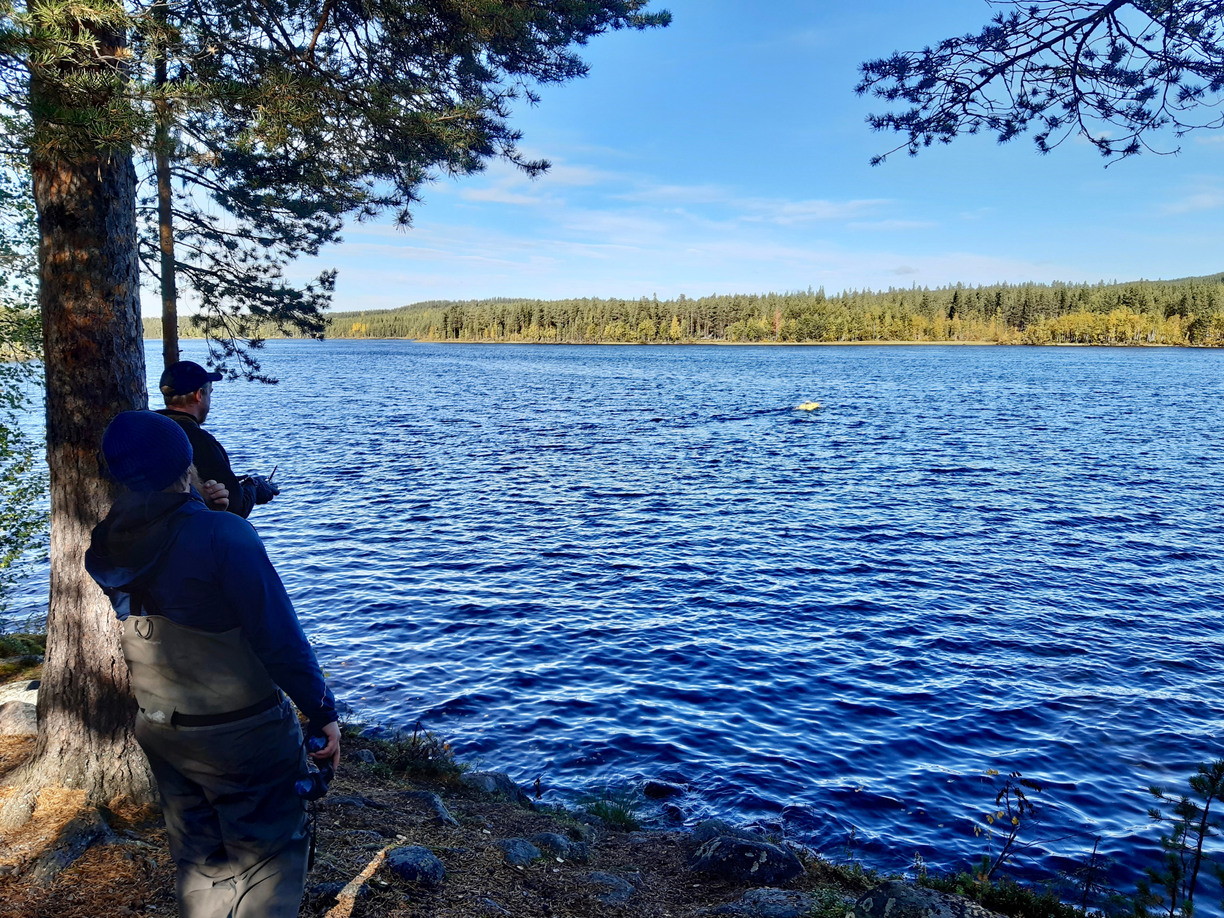
Anders Andersson and Anton Burman measure flow rates for digital twin validation using an Acoustic Doppler Current Profiler. Photo by Henrik Lycksam
21 April 2021
Digital river provides answers to environmental impact
Short-term regulation of rivers can affect the environment in a river channel. Researchers at Luleå University of Technology have therefore developed a digital twin of a river stretch and can, with the help of that, estimate local environmental impact from short-term regulation of hydropower. The local environmental impact can then be balanced against the environmental value of being able to regulate weather-dependent electricity production such as solar and wind power.
The researchers have started from a section of the Lule River, but the methods are general and can be applied to any river.
– Rapid changes in flows through power plants lead to variations in water depth and speeds downstream that can affect the environment in the river for example to, fish, benthic fauna and people who live adjacent to the river or use it for recreation, says researcher and project manager Anders Andersson, department of fluid mechanics and experimental mechanics at Luleå University of Technology.
Digital twin
A digital twin of a river stretch can predict these changes in velocities and water levels in the river depending on how the water is regulated. It is already known that these variations are reduced with increasing distance from the power plant through the river's natural inherent attenuation. This natural attenuation can be small, but with increasing distances from the power plant, it is often significant.
– Yes, we have shown that a digital twin is a good tool for evaluating the extent of this attenuation and with the support of the results from our work, we can develop proposals that reduce the impact on the environment, he says.
In an assessment that seeks to find an optimal balance between Sweden's national environmental goals on climate and biodiversity, digital twins of river stretches focused on these issues can be a tool to ensure that more efficient and beneficial measures are taken.
– This project aims to address this by evaluating the different types of hydraulic tools that are available, giving examples and illustrating values and recommending methods depending on formulated goals and local conditions, says Anders Andersson.
The project is funder by the Swedish Energy Agency
Published:
Updated:
